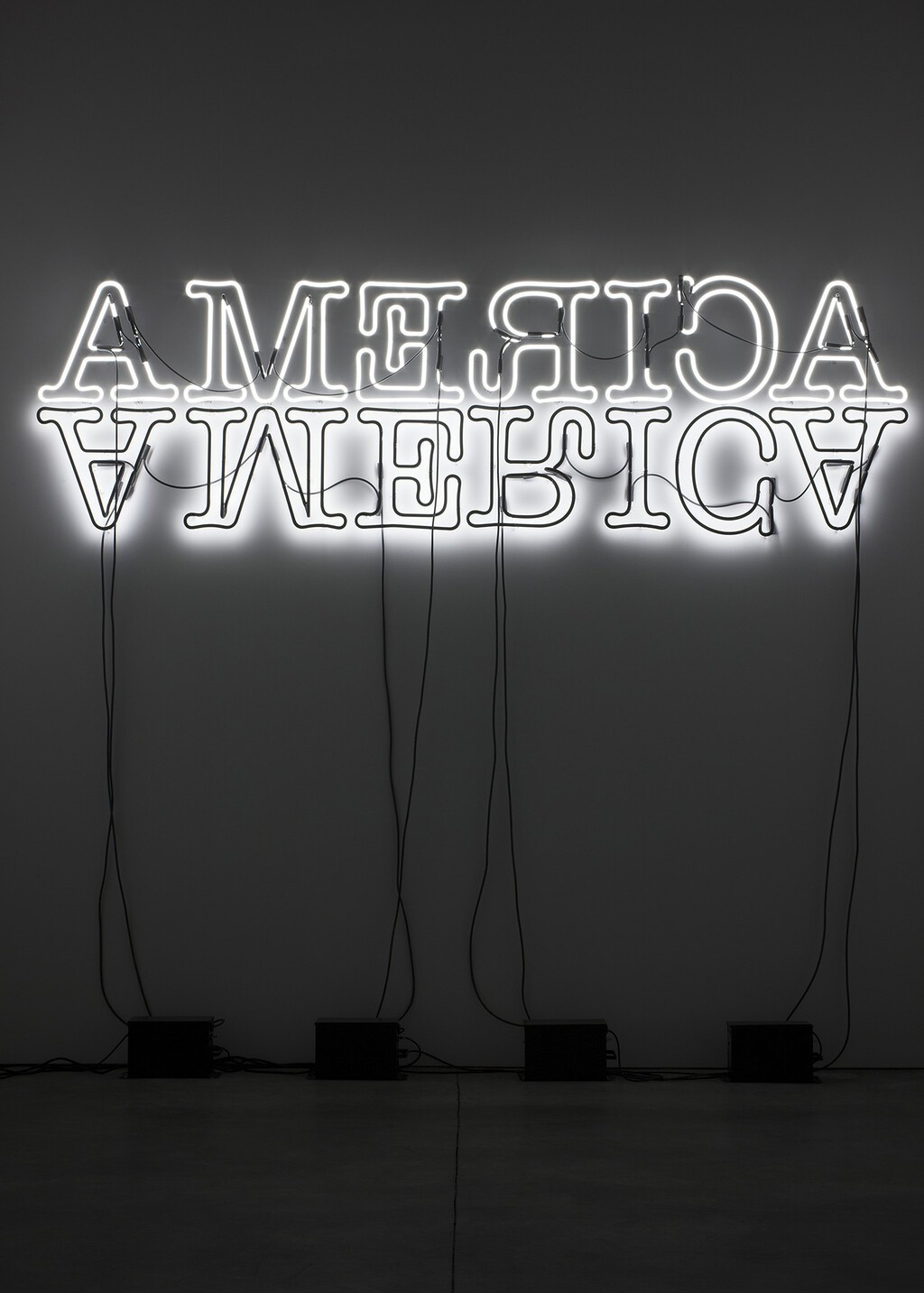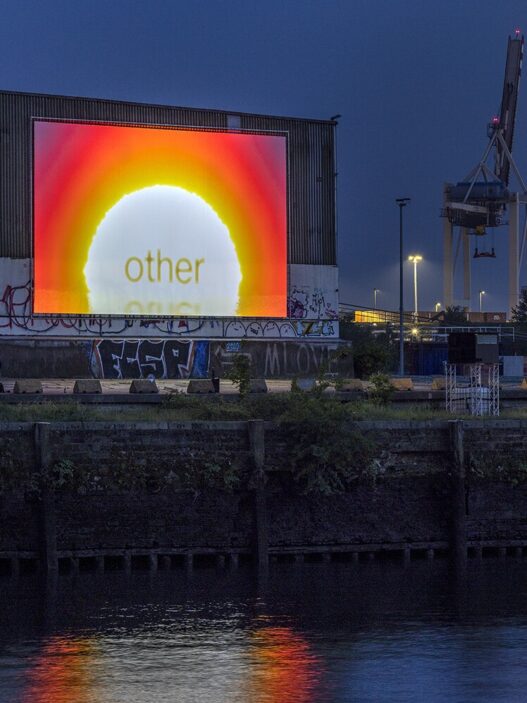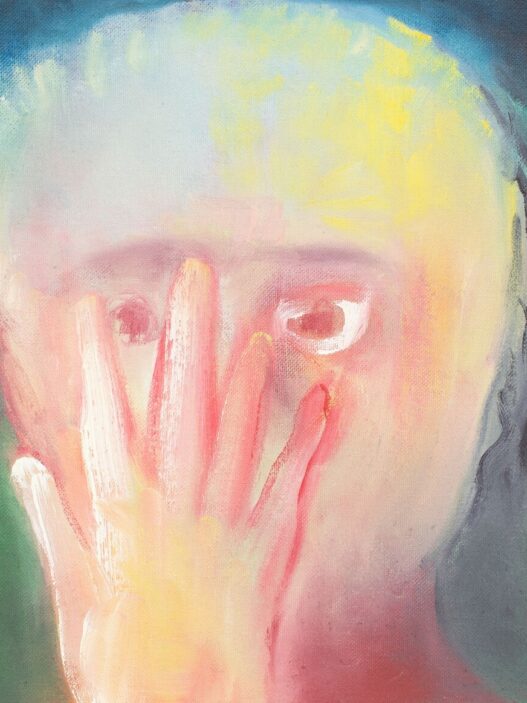June 24–November 20, 2022
Glenn Ligon was born in 1960 in New York. Painting was the main focus of his artistic activity at first, with influences from more current conceptual art as well as the canon of artists like Philip Guston, Cy Twombly, Robert Rauschenberg, and Jasper Johns. Early on, Ligon used stenciled words that would come to represent his oeuvre while quoting text in his works. He emphasizes the social and political value systems that give these texts meaning and how they are changed or emphasized in the work by using painted language.
The exhibition’s opening space gathers a number of American light installations. These neons, which were first displayed in 2008, change the meaning of the word “America” by painting it black, flipping it, reversing it, or animating it. Instead of intelligible words, the artist concentrates on single letterforms and non-linguistic mark making in his large-format oil and serigraph paintings titled Debris Field.These forms float on the surface of the canvas, generating a series of rhythmic improvised compositions and ultimately create an open-ended system that allows the artist to explore, in his own words, “the possibility of meaning, the elements of meaning.” A monumental new diptych from the Stranger series is also presented. It incorporates the entire text of James Baldwin’s seminal 1953 essay, “Stranger in the Village,” in which Baldwin recounts his stay in a tiny Swiss village, where most of the inhabitants had never encountered a black man before. Paintings produced during workshops with young children held as part of a residency at the Walker Art Center in Minneapolis in 1999–2000 are also on display. Coloring refers to a series of paintings by Ligon that she created using the children’s colored versions of Afrocentric drawings from the 1960s and 1970s.
Post-Noir at Carré d’Art is Ligon’s first solo exhibition at a French institution.
Pl. de la Maison Carrée
30000 Nîmes
France












![[1] Ríos de Gente, 2021. Photo: Juan Esteban Calderón. [2] Estrías, 2009. Photo: City of Women. [3] Quien Puede Borrar Las Huellas?, 2003. Photo: Victor Pérez. [4] Tierra, 2013. Photo: Bertrand Huet. [5] La Sombra, 2017. Photo: Michael Nast. All images courtesy of the artist.](https://dailyart.news/wp-content/uploads/2022/06/regina_jose-95x95.gif)
![[1] Ríos de Gente, 2021. Photo: Juan Esteban Calderón. [2] Estrías, 2009. Photo: City of Women. [3] Quien Puede Borrar Las Huellas?, 2003. Photo: Victor Pérez. [4] Tierra, 2013. Photo: Bertrand Huet. [5] La Sombra, 2017. Photo: Michael Nast. All images courtesy of the artist.](https://dailyart.news/wp-content/uploads/2022/06/regina_jose-527x703.gif)






